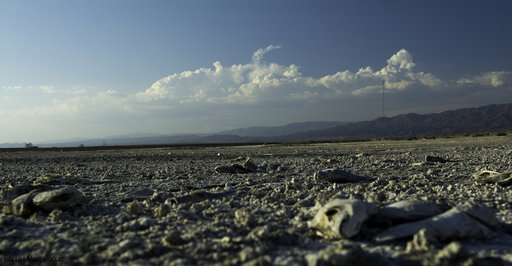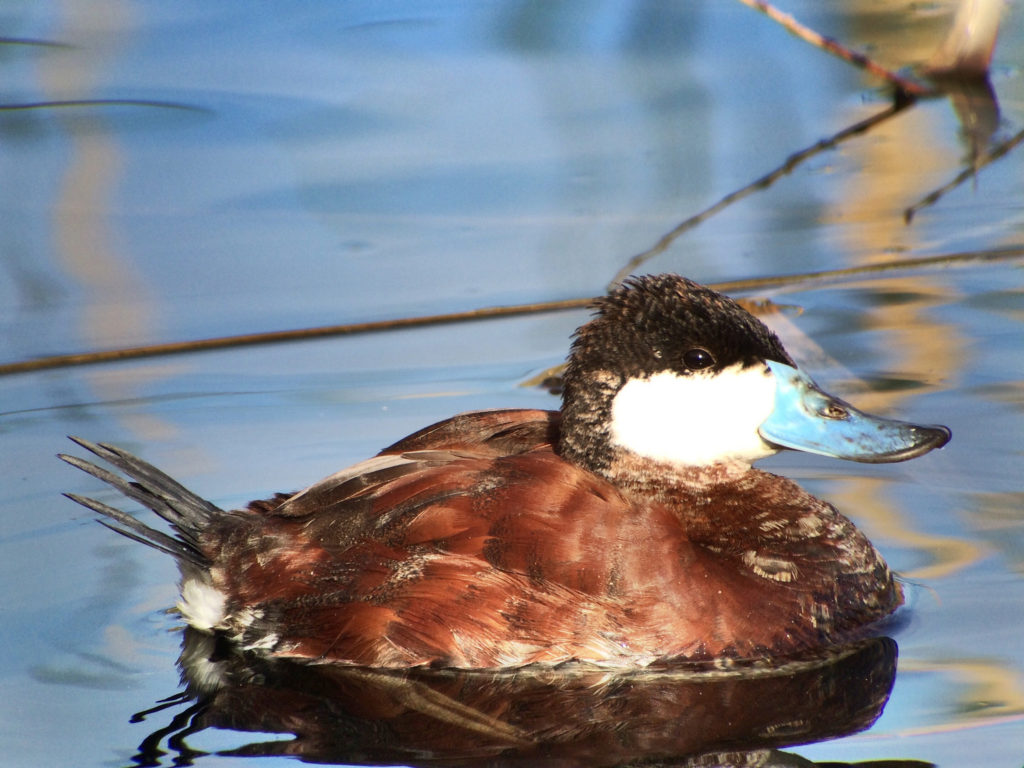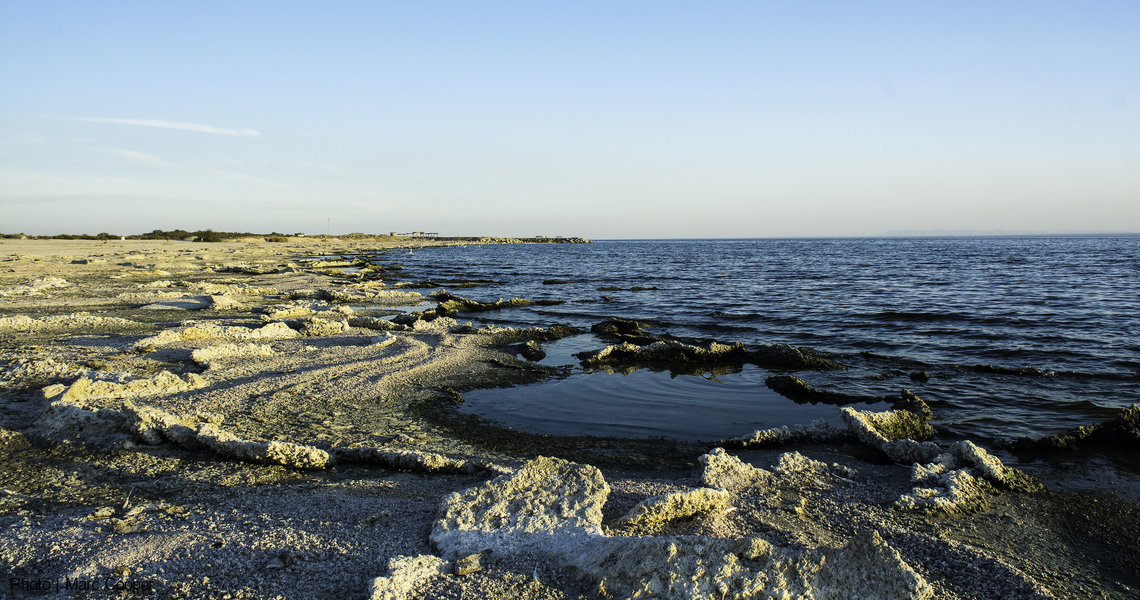This article was written by SJV staff in collaboration with Michael Lynes, Director of Public Policy for Audubon California.
The Salton Sea, part of the Colorado River delta system, is located in the desert landscape of southeastern California, in Riverside and Imperial counties. Over the last thousand years, the meandering nature of the Colorado River occasionally flowed west; filling the Salton Sink basin and creating a temporary freshwater lake that lasted until the water evaporated. These ephemeral waters were part of the important system of wetlands and riparian habitat of the Colorado River and its delta, providing vital habitat to birds and other wildlife.
The Salton Sea of today was created unintentionally in 1905, when heavy rains and flooding led to a breached canal levee, which released the flow of the Colorado River into the Salton Sink. Over the course of the next two years, water filled a roughly 350 square-mile expanse, creating the largest lake in California: the Salton Sea.
During the 1950s, the Salton Sea transformed the area into a thriving resort destination. Land managers stocked fish in the lake. The Sea attracted tourists from all over for fishing, swimming, waterskiing, boating, golf, and more. As development and agricultural conversion in the west reduced natural habitat, the Salton Sea also played an important ecological role as replacement habitat for wetlands and lakes. For more than a century, the Salton Sea has been a major nesting, wintering, and stopover site for millions of birds.
By the 1970s, the closed nature of the Salton Sea system was taking its toll. Because the only outlet from the Sea is evaporation, over time it has become more and more saline. With no input of water other than rain and agricultural drain water from Mexico and the U.S. (full of agricultural salts and other pollutants), salinity in the Salton Sea is about 25% greater than ocean water.

Today, the Salton Sea is gravely imperiled. The increased salinity and nutrient inputs from agriculture have led to massive fish and bird die-offs. In addition, the Sea itself is shrinking due to drought, water conservation, changing agricultural practices in the Imperial Valley, and large agricultural-to-urban water transfers. As more water is diverted from the Colorado River for nearby cities like San Diego, less water flows into the Salton Sea. Due to the shallowness of the lake, drops in water levels expose shorelines around the perimeter (called playa). As the Salton Sea dries, salinity and selenium concentration increases, depleting food resources and posing health risks to birds. As more playa is exposed, toxic particulates are kicked up by winds to form toxic dust storms. More than 650,000 residents inhabit communities immediately adjacent to the sea and another one million people live in nearby Mexicali. Many people already suffer from some of the largest rates of asthma and respiratory problems in the country, and commonly lack adequate access to health care. Researchers believe that 50,000 acres of playa will be exposed in the next ten years alone, making this an even bigger problem in the future.

There is a lot at stake for several species of birds that migrate along the Pacific Flyway and depend on the Salton Sea. In all, more than 400 species of birds have been recorded at the Sea, which has been designated as an Audubon Important Bird Area of Global Significance. It is the winter home to large majorities for several populations, including 90% of North America’s Eared Grebes, 50% of Ruddy Ducks, and 30% of American White Pelicans. The once fish-rich waters provided food for Brown Pelican, Double-crested Cormorant, and Caspian Tern, among other species. The mudflats and shorelines are also essential for hundreds of thousands of shorebirds during migration. Unfortunately, the Salton Sea system appears to be crashing years before models predicted and observers report finding starved grebes, dead fish, and all around declines in bird numbers around the sea in 2017.
The good news is that the State of California has initiated planning and project implementation to begin to address the problem. In March 2017, it released the draft Salton Sea Management Program Phase I: Ten-Year Plan, which sketched out the rate of exposure for the Salton Sea lake bed, air quality control and habitat projects, and a $380 million budget for work over the next years. The State has promised rapid action to construct projects to control dust and replace lost habitat, but an effective program will require years of sustained effort. The State needs the support of partners in the federal and local governments, water agencies, and non-governmental organizations to keep moving toward a solution.
Audubon California has been working on a number of projects to aid the State of California in the development of a management plan. In addition to bird monitoring and community-based conservation projects, Audubon California along with partners Point Blue Conservation Science and Cooper Ecological Monitoring, Inc. recently modeled the use of bird habitat at the Salton Sea using data collected in 1999 and 2015 and submitted a report to the State in November 2016. The results were used to create a report that serves as a guide for the State to support the ecologically important functions that the Salton Sea provides for birds, and understand the important role that habitat can play in mitigating dust on the playa surrounding the Sea.
In addition to the work by Audubon California, SJV partners Ducks Unlimited and California Waterfowl Association have also worked on important habitat restoration efforts at the Salton Sea, funded in part by the North American Wetlands Conservation Act. These projects restored, enhanced, and protected seasonal and semi-permanent wetlands and associated upland and riparian habitat adjacent to the Salton Sea. These efforts help balance out the habitat that is being lost as the Salton Sea shrinks, and help ensure a healthier future for birds, other wildlife, and people who live in the area.
To learn more about the Salton Sea and what you can do to help, please visit Audubon California. Click here to access the full report.

